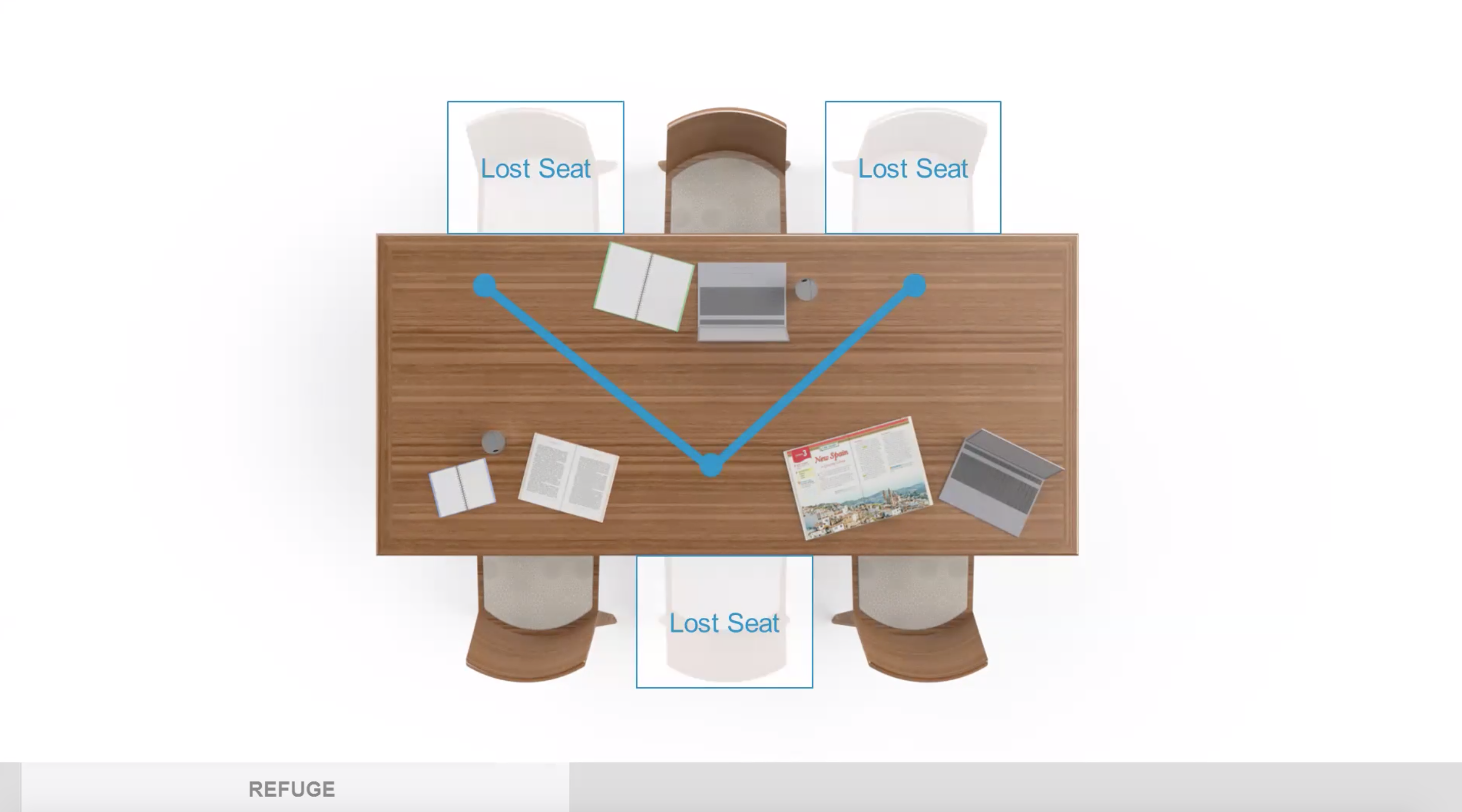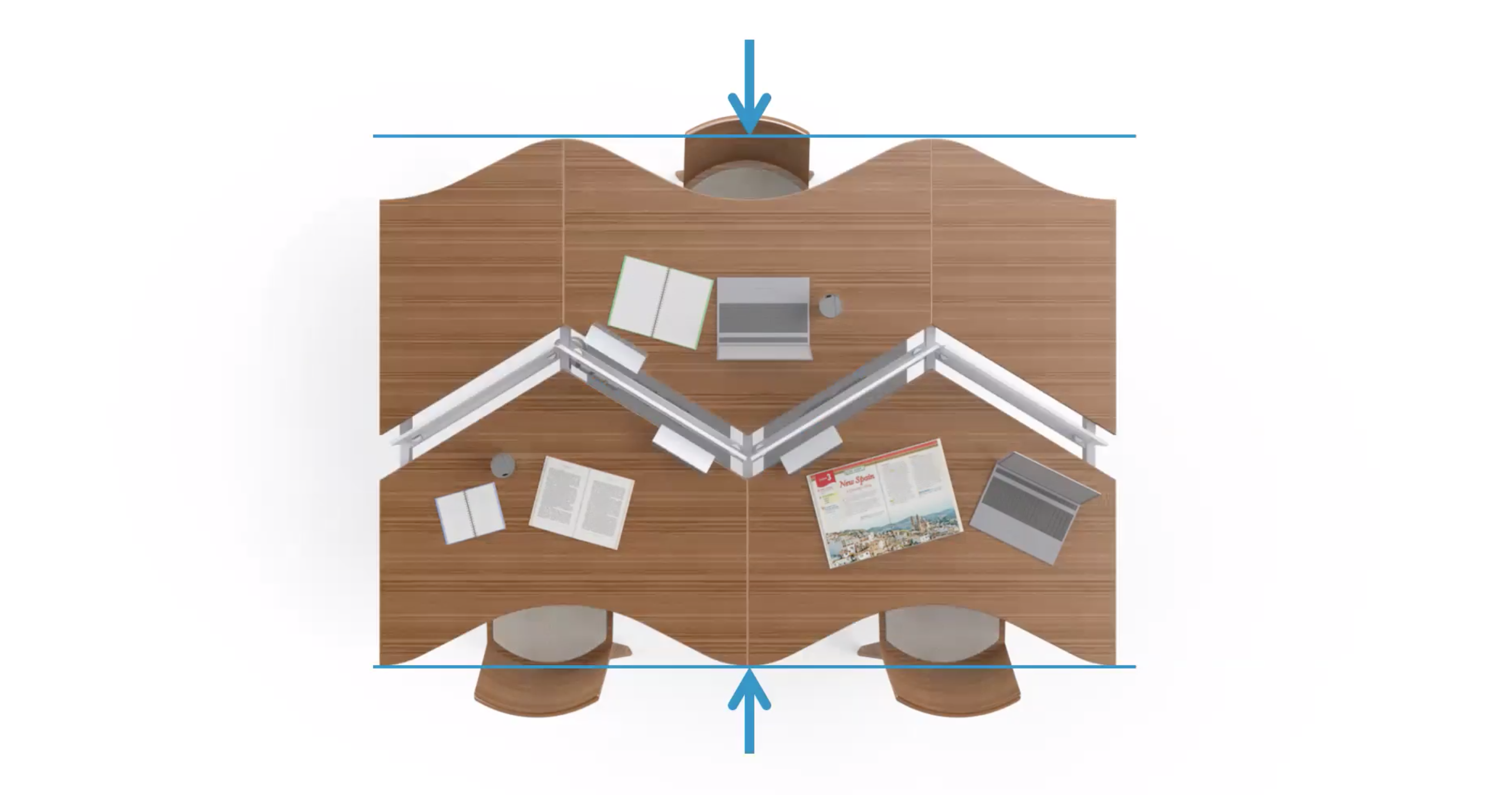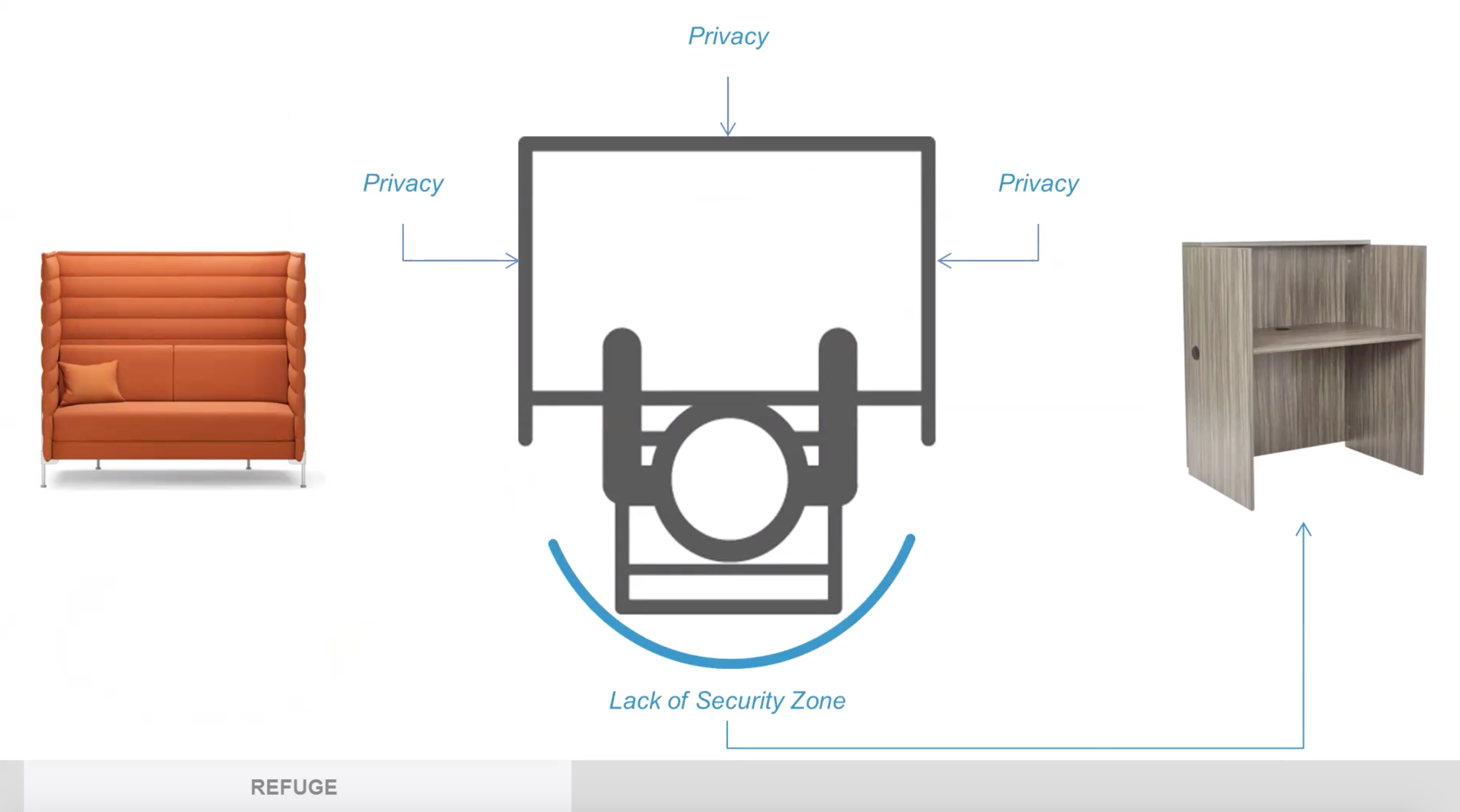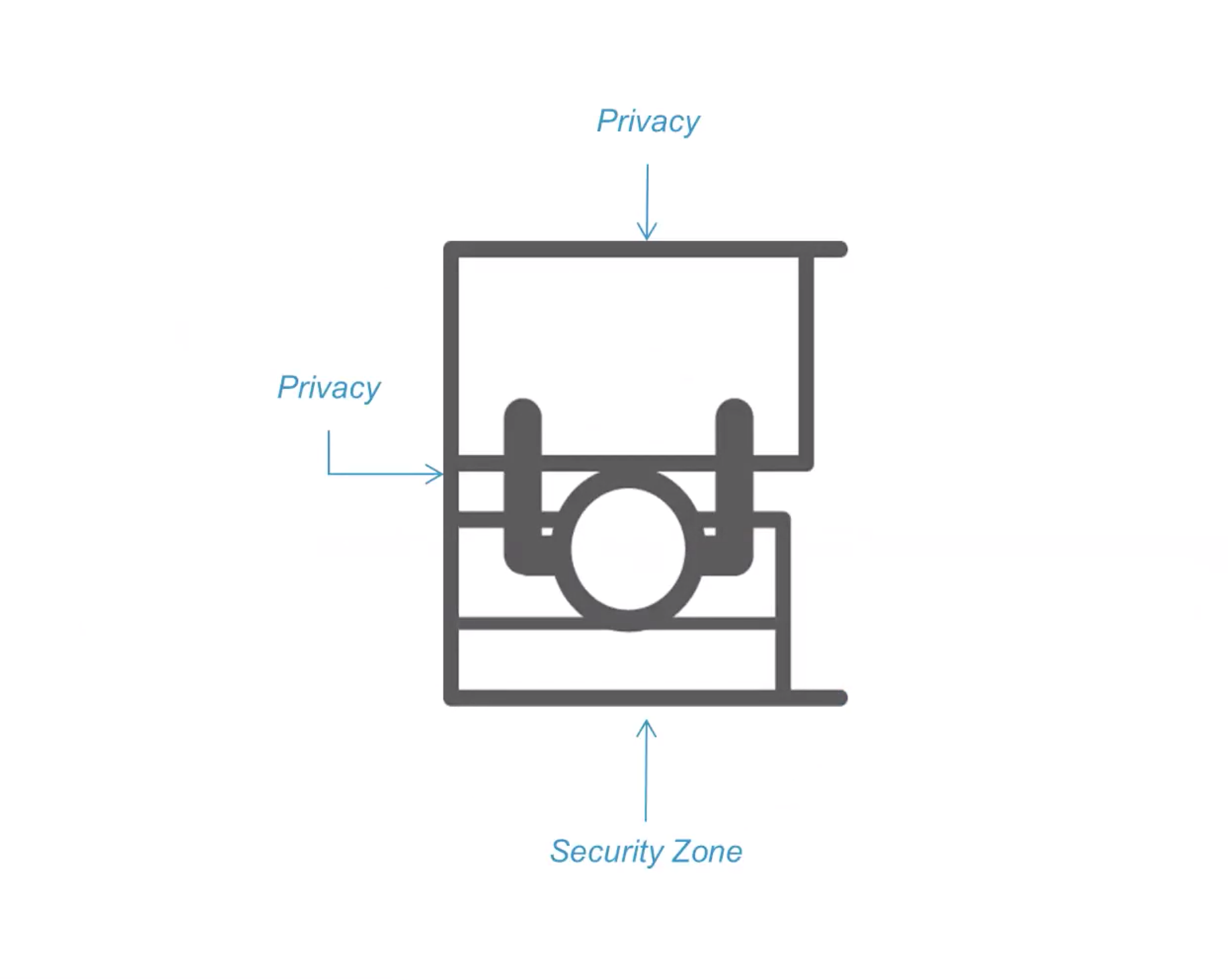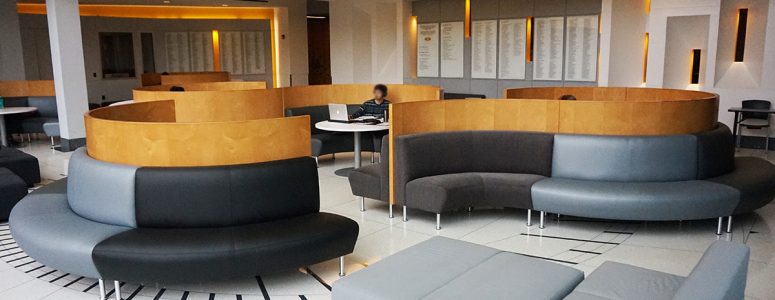
There’s no doubt that you know the problems you want to solve in your space.
There’s no doubt that you know how you want your patrons to feel: Secure. Safe. Comfortable. Productive. Confident. And the list goes on.
But how to accomplish that result can be difficult. And it requires intentional use of the space and furniture.
We talk about this a lot around here, but the reality is that our patrons have natural, innate behaviors or thought patterns that subconsciously influence their experience of our space.
Where will they sit? Where won’t they sit? Can they clearly see what furniture is open for them to use? Do they feel safe and comfortable? Do they feel exposed or secure?
Addressing these natural experiences and behaviors is accomplished through an understanding of how to leverage human behavior rather than ignore it. And this is best achieved through an understanding of biophilia and biophilic design.
What is Biophilia?
Biophilia, in relation to design, is the study of how to connect our patrons with nature and elicit a positive response to the space by leveraging innate human behavior. As humans, we have a natural response to nature and subconscious needs that, if left unmet, cause us to feel insecure or exposed.
Further defined, “[Biophilia] helps explain why crackling fires and crashing waves captivate us; why a garden view can enhance our creativity; why shadows and heights instill fascination and fear; and why animal companionship and strolling through a park have restorative, healing effects. Biophilia may also help explain why some urban parks and buildings are preferred over others” (14 Patterns of Biophilic Design, Terrapin Bright Green).
We see this at work by examining how, despite the changes in technology in our world, innate work patterns have stayed the same. Using universities as an example, technology was vastly different 10+ years ago, as the majority of students had to go to a computer lab to complete a project or paper for class (shown on the left in the image below). Fast forward to today, and we see that, even though the technology has changed and students often work from multiple mobile devices at once, work patterns have stayed the same.
As shown, students still feel most comfortable sitting in the middle of the banquette. They still have their books out. And they still guard their space by placing their bags on either side of them. (We’ll dig into why throughout the rest of this article.)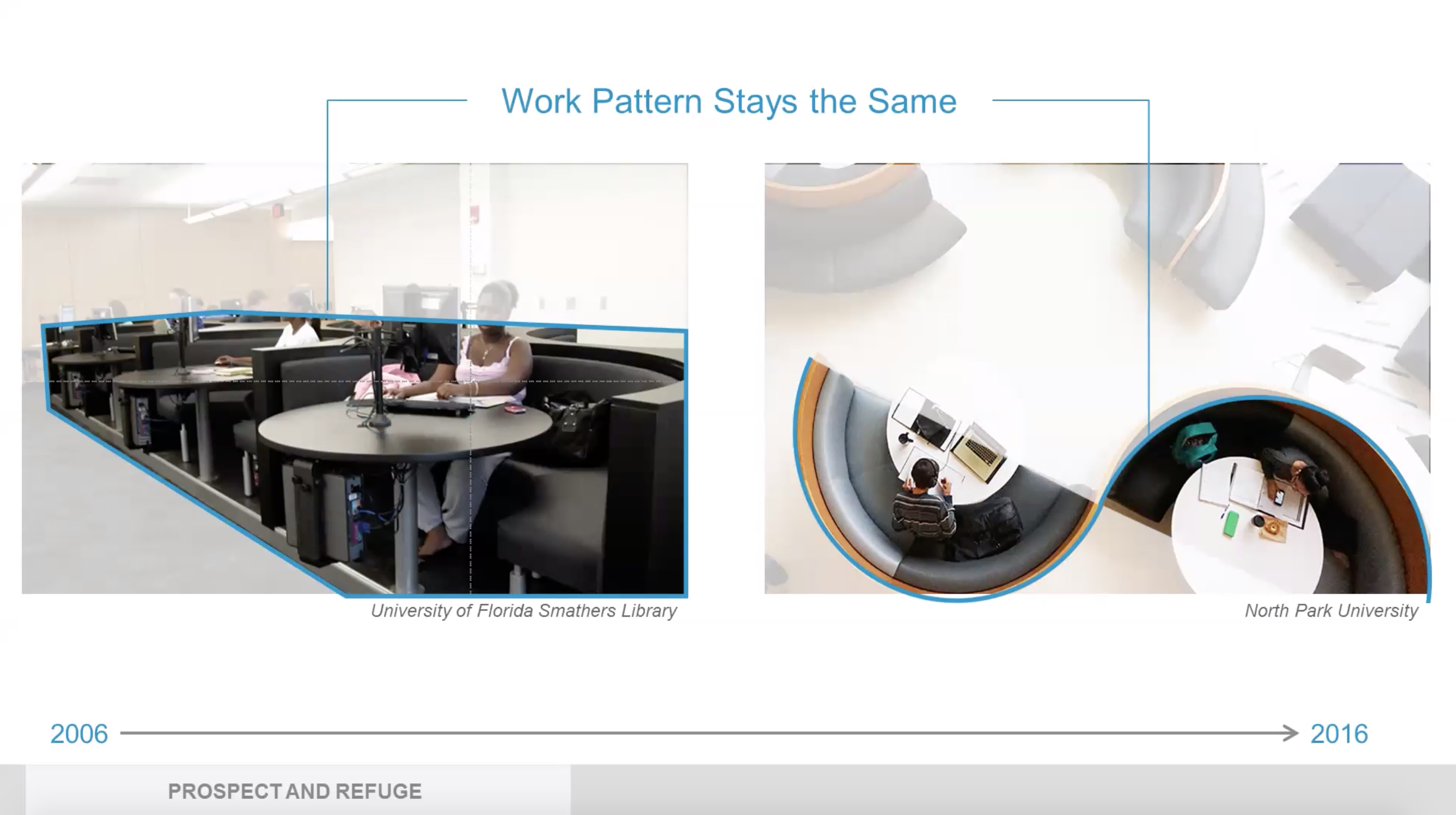
Biophilia is an expansive study that is applied across many different sectors (we cover it in detail on our latest webinar, Biophilic Design: 14 Patterns for the Built Environment), but there are two aspects of biophilia that best apply to furniture design and formation which we will examine: Prospect and Refuge.
What is Prospect?
Prospect is the ability to survey your environment (line of sight). Put simply, when people are in a public space, they want to at some level be aware of what’s going on around them. This is especially true if there’s not a lot of options for seating that leverages refuge (which we’ll get into in the next section). From the moment a patron first walks in, there is a level of confidence and comfort that comes from being able to survey the space they’re in.
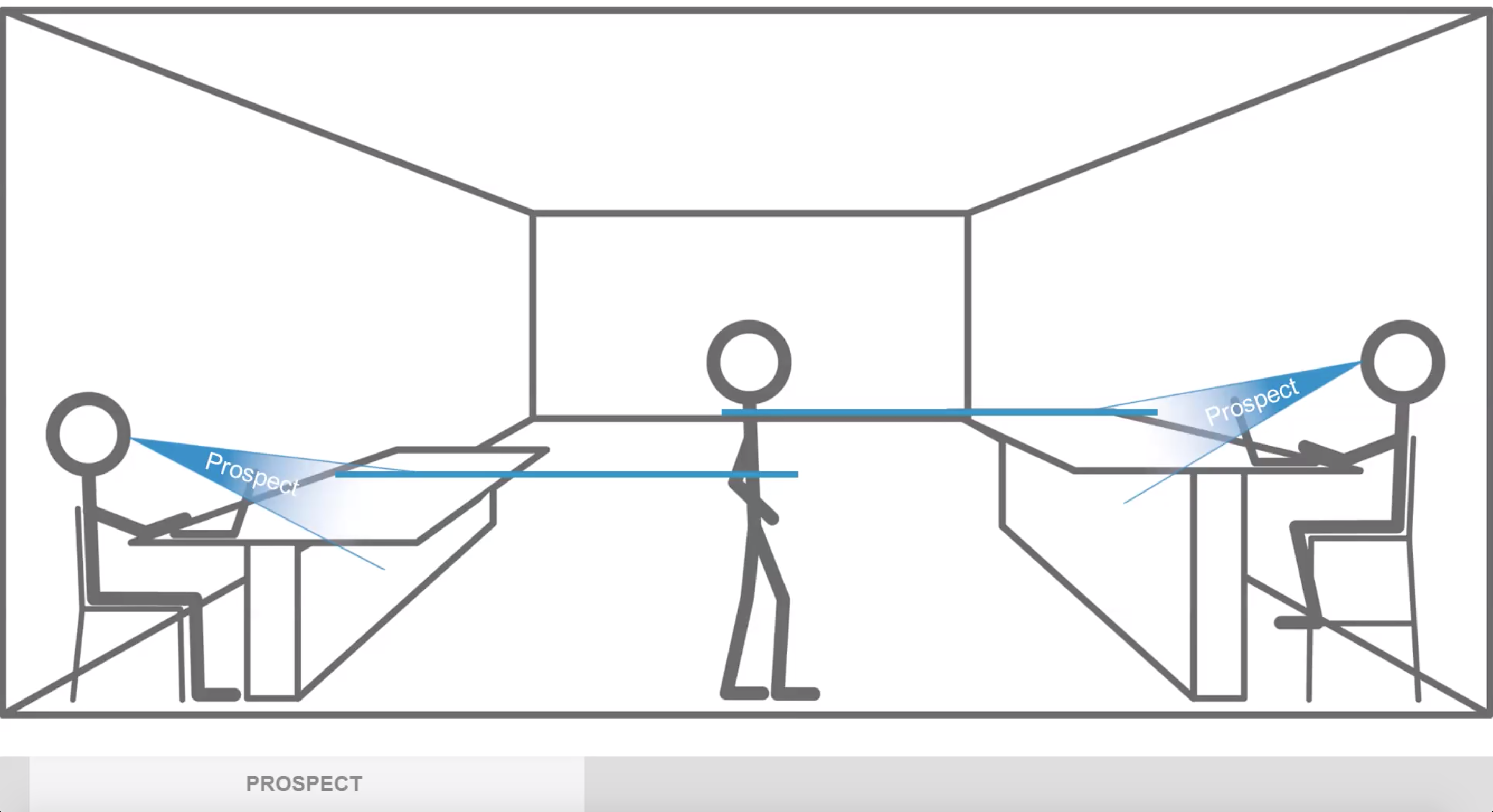
Take the image above as a basic example. In an open space, people will tend to pick a seat that gives them the greatest line of sight. The high top table, while it supports the same style of work as the lower table, provides the patron with a greater perspective of what’s happening around them, even if it’s just out of their peripherals. Especially in a high traffic area, a higher line of sight helps alleviate the feeling that people are walking over top of them.
Prospect should also apply to our decision on the height of seat backs in our space as well:
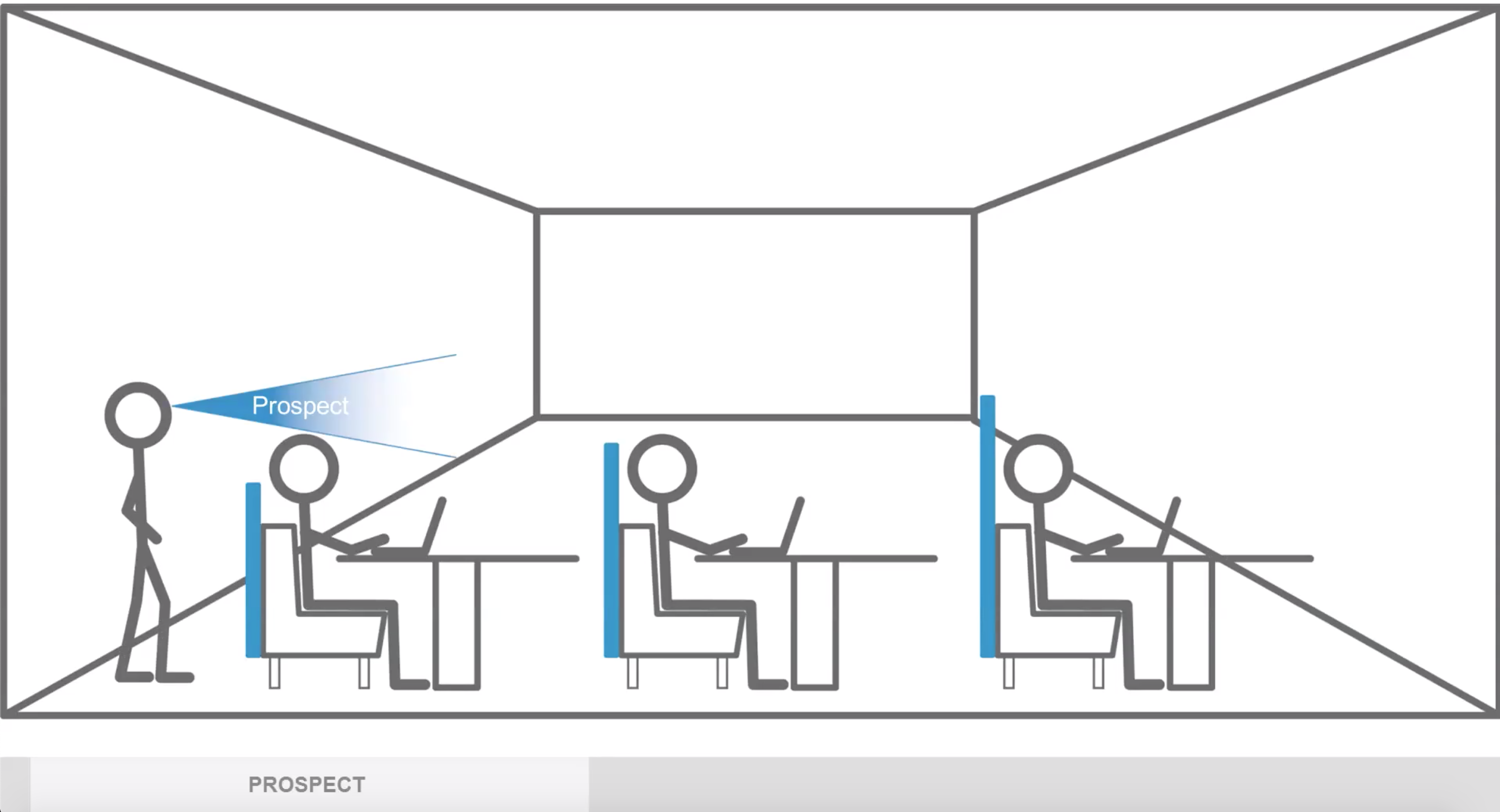
Oftentimes we have clients interested in higher seat backs to capitalize on a feeling of refuge. However, this actually takes away from the ability for someone walking into the space to see what seats are available, which ultimately has a negative effect on the feeling of refuge for patrons. If seat backs are too high, those coming in to our space have to get uncomfortably close to a seat to see if someone is working there. This causes disruption and discomfort, hurting the environment you want to create in your space.
Overall, prospect matters. The ability to see across a space supports the innate feeling we have to feel safe, protected, and in control. But prospect isn’t all that matters. It works in tandem with the second aspect of biophilia that relates to furniture: Refuge.
What is Refuge?
Refuge is the ability to find haven from the main flow of a space, and often consists of a covering for an individual’s back. The desire for refuge ultimately plays on our subconscious need to feel protected and secure. When our backs are covered, there’s no innate concern of what we can’t see that clouds our productivity.
We’re secure. We’re comfortable. We’re safe.
We see this play out regularly in spacing at traditional wooden tables, which lack a strong sense of refuge. As individuals fill the seats at the table, spaces are often left open as patrons want to maintain their “personal bubble.”
How do we fix this? By rethinking table design with refuge in mind. Working with this natural behavior, we’re able to leverage the refuge that individuals desire and actually place them “inside” the table to some extent. This provides that feeling of refuge as their sides are covered.
Additionally, this design takes away the discomfort of sitting across from someone you don’t know. We’ve all experienced it: You’re sitting across from someone and you both look up at the same time, make eye contact, and aren’t sure what to do next. That experience can be a little unsettling and can affect the refuge patrons feel in our space.
Privacy vs. Security
We see a similar issue arise with study carrels. In recent years, we noticed that in many universities and libraries, banquette-style seating was filling up more consistently than traditional study carrels were.
Why?
Looking into it, we realized that study carrels provide a feeling of privacy. But there is a difference between a feeling of privacy and a feeling of security. We often want to equate privacy with comfort. However, privacy doesn’t lead to comfort, but a feeling of security does.
So, how do we fix this? Similar to our thoughts on the table design above, we have to completely rethink study carrel design to capitalize on individuals’ innate desire for refuge and security. By rotating the user 90 degrees, we’re able to place the user inside the carrel and create a strong feeling of haven and focus.
Refuge matters. By recognizing that human behavior inevitably leads our patrons to search for places of haven, we are better able to serve them through thoughtful furniture choice.
Biophilia and Your Space
So where do you start? How do you take the concepts of prospect and refuge and effectively apply them in your space?
Ultimately it comes down to this question: What are your intended outcomes for your space?
By understanding your mission for the built environment, your patrons’ actual needs, along with the natural culture of the space, you’re better able to determine how to supplement those efforts through intentional furniture choices.
As with most design, it’s about balance. Often we like to lean too far in one direction when it comes to prospect and refuge. It doesn’t have to be 50-50. But it needs to make sense for your culture and your intended outcome.
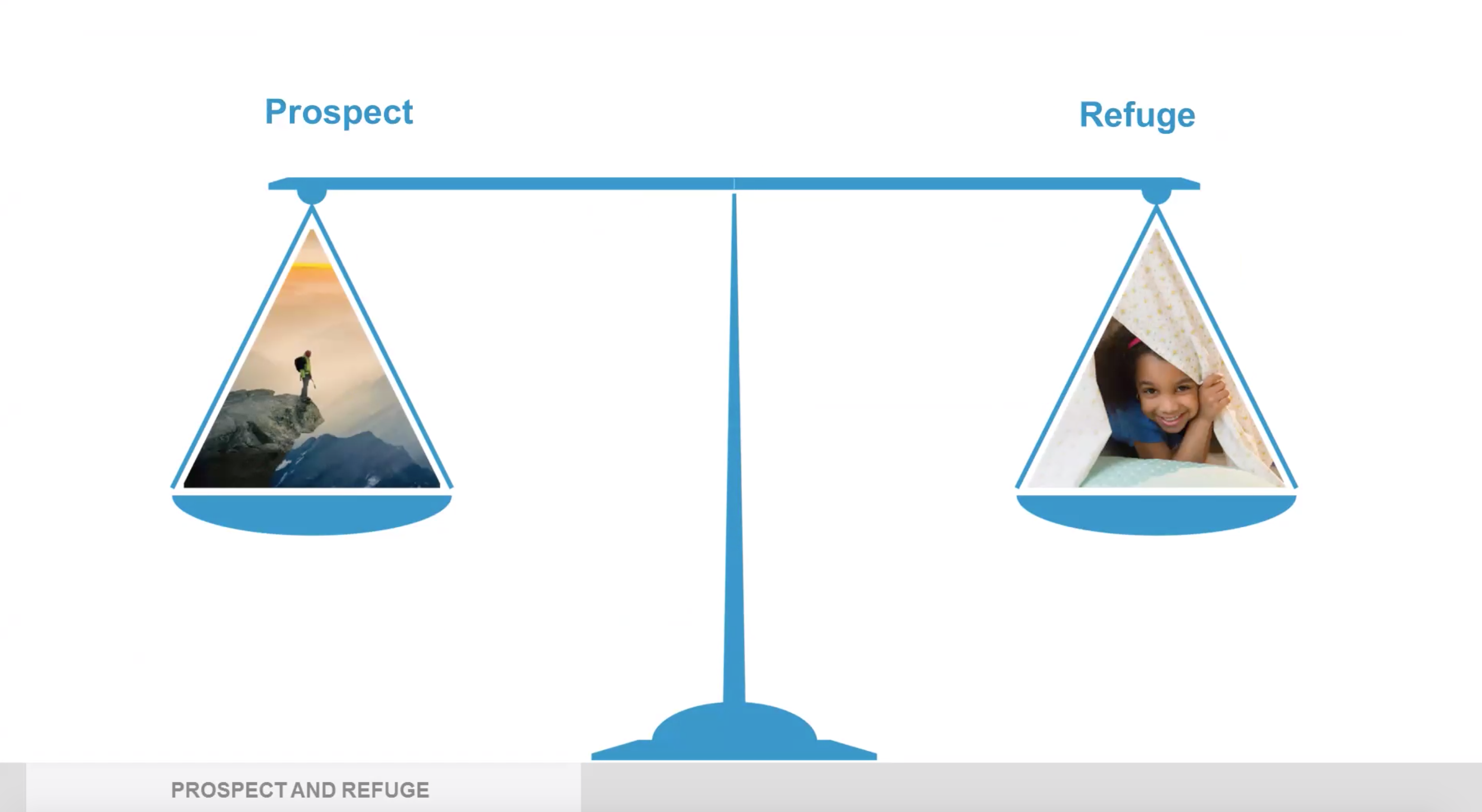
Take the example we started off this article with as an illustration (image below). The image on the left is from The University of Florida and the image on the right is from North Park University in Chicago. These two universities have very different cultures, which led them to use furniture in very different ways.

North Park University, in true Chicago fashion, recognized that their students are more “introverted” in how they study. As a result, they emphasized a feeling of refuge in many of their spaces. Inversely, The University of Florida understood that most of their students felt comfortable with a more organic, open feel to their study environments, which led them to emphasize prospect in their study spaces.
Both aspects of biophilia are important, but how we leverage them is determined by our culture and intended outcomes.
What can’t be missed is this: The psychological factors of Prospect and Refuge are the groundwork for furniture in public spaces. Understanding these aspects of human behavior makes it easier to understand the functional elements of furniture and allows us to be confident we’re purchasing the right furniture for our space.
Want to learn more about biophilia, how a connection to nature literally affects productivity and focus, and how to use furniture to create a biophilic response? Check out our latest webinar, in partnership with IIDA and Terrapin Bright Green.
